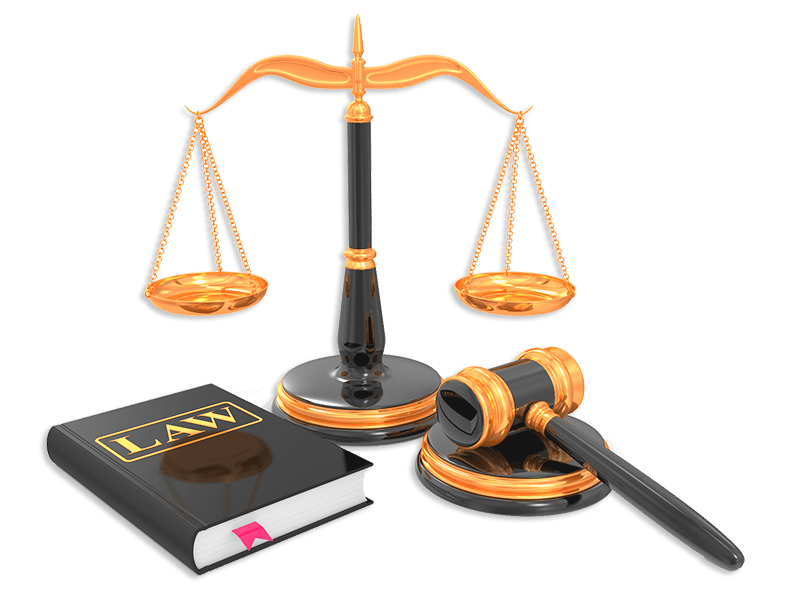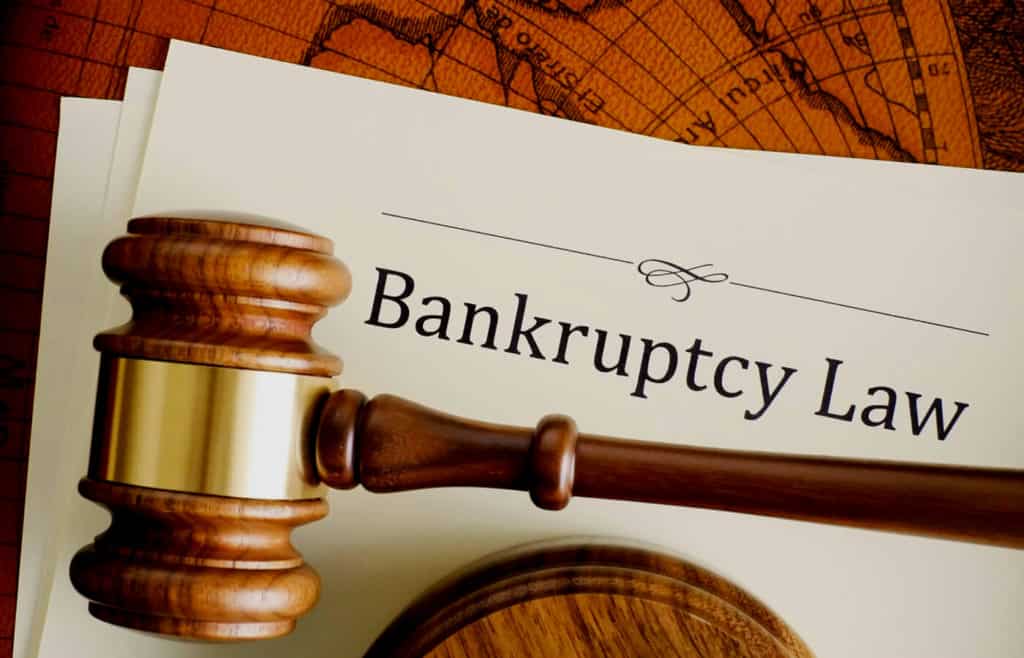Pandemic Related Bankruptcy In San Diego - USA
Book Your Free Bankruptcy ConsultationIf you are facing Pandemic Related Bankruptcy in San Diego? Here are the Provisions In The California Bankruptcy Law For Individuals & Businesses
A pandemic disrupts all economic activities beyond control. Due to the shutdown of businesses and loss of jobs to individuals in the wake of the Coronavirus filing bankruptcy has become the final resort to many. However, one must consider the Federal Government’s relaxations besides the law’s existing provisions to make the most of bankruptcy filing.
Introduction
The world has seen many devastating endemics at various times in history, such as the plague, cholera, and H2N2. However, the current global coronavirus attack is perhaps the worst in the history of outbreaks and pandemics. Authorities are yet to assess its full magnitude. As the virus still spreads relentlessly with uncertainties on how long it will continue, recessionary business trends and pandemic-related lockdowns throw many businesses out of gear and people out of jobs. It goes even beyond governments’ capabilities to sustain the citizens’ everyday living conditions, as their logical priority shifts towards mobilizing resources for saving lives than anything else. Consequently, more and more individuals and businesses are getting on the track to bankruptcy.
The Pandemic’s Effect On Individuals And Businesses
Individuals who had borrowed money expecting to pay back in installments out of their earnings will find it difficult if their income is reduced or they lose their jobs due to the pandemic. Usually, an individual or organization may not become bankrupt overnight; the gap between income and commitments widens over a period. The entity will know the trend in advance before it reaches the point of no return. A report by Eliza Ronalds-Hannon, Katherine Doherty, and Davide Scigliuzzo (2020) says that a “wave of U.S. Bankruptcy builds toward the worst run in many years.”
In the pandemic’s background, individual and organizational bankruptcy can shoot up like anything. With an epidemic temporarily closing many businesses and stifling consumer demand, whole industries, especially the ones that have recently leveraged their balance sheets to take advantage of near-zero interest rates, are seeing their profits disappear virtually overnight, leaving too little cash flow to cover debt payments owed to creditors. This is where a bankruptcy filing can save a business. However, the courts have a torrent of bankruptcy filings to handle, thanks to the considerations extended by the Federal Government (Gerdeman D., 2020)
The Federal Bankruptcy Law
Bankruptcy is a condition when individuals or entities cannot repay their debts to creditors from resources. Even in typical economic situations, it is not uncommon for organizations or individuals to go bankrupt. The U.S. government has existing legal provisions to deal with such bankruptcies. The Bankruptcy law in America has a long history dealing with such cases, which extends even before the Revolutionary War.
It includes enabling provisions on bankruptcy in the American constitution under Article 1, Section 8. There is a Federal Law to deal with bankruptcies, which applies to the entire nation (all states and U.S. territories). Within the Federal law framework, each state is free to frame its provisions to grant more rights to the beneficiaries than provided in the Federal law, but not otherwise.
Provisions In The California Bankruptcy Law
According to the law, the entity that has gone bankrupt can get immediate relief by the stoppage of payments against creditors’ claims until debts are sorted out.
The California Bankruptcy Law applies to individuals and organizations within California and is addressed as Bankruptcy in California. Like similar statutes existing in other states in the U.S., California Bankruptcy Law provides for filing of bankruptcies under provisions in Chapter 7, Chapter 11, or Chapter 13. Chapter 7 is for liquidation of assets for debt relief applicable to individuals or organizations. Chapter 13 only provides for the reorganization of the debts but is restricted to individuals and sole proprietors. Chapter 11 has beneficial provisions for businesses.
A bankrupt individual or establishment can file a case as per California Bankruptcy Law in a Bankruptcy court in California, and get protection from creditors as per the law. The current pandemic situation has forced many businesses and individuals to exist on a minimum of resources and seek bankruptcy filing.
Bankruptcy In California Tops The List Of Bankruptcy Cases In The U.S. Courts
Reported data on state-wise Chapter 7 bankruptcy filings reveal that California topped the list during the 12 months ending June 2020. Statista shows that the state of California received 59,056 non-businesses related bankruptcies. In contrast, the number of bankruptcies for businesses stood at 2,682. Past data also reveals that Bankruptcy in California has always been on the top of the list. As California is a state with a high living cost, particularly for housing and transport, it makes it more vulnerable for people and organizations to get into bankruptcy.
Government Initiatives To Mitigate Adverse Impacts To Individuals And Organizations
An analysis was done by the American Foreign Policy Research Institute titled ‘COVID-19 and Pandemics’ (Hamilton, R., 2020). It states that COVID-19 has done more damage than any war America has ever fought. It killed over 130,000 people, as of early July 2020, which is larger than the number of Americans who died in wars since World War II. COVID-19 rendered 48 million people jobless (based on registered claims within 15 weeks from the start). The report adds that the US GDP contracted by 4.8% in the first quarter of 2020, predicting a contraction of 5.8% for the entire year. The damage is likely to be long-lasting for several industrial sectors. Stimulus packages announced by the Administration also significantly eroded America’s fiscal position.
The Coronavirus has done and is still doing irreparable damage to the economy; the end is nowhere in sight yet. The silver lining is that clinical trials on vaccines are reaching the advanced stages, and hopefully, there will soon be a vaccine for general public-use.
The United States has brought out relief packages to reduce hardships to individuals and establishments caused by the Coronavirus crisis to individuals and establishments. The most important one is the ‘Coronavirus Aid, Relief, and Economic Security Act’ or the ‘CARES Act’ 2020 (U.S. Department of the Treasury).
The main provisions in the above Act are:
- Division A – Keeping workers paid and employed health care system enhancements and economic stabilization.
- Division B – Emergency appropriations for coronavirus health response and agency operations
The initial estimate of the effects of the CARES Act, given by the Congressional Budget Office (U.S. Congressional Budget Office) as of April 27, 2020, is:
- $988 billion increase in mandatory outlays
- $408 billion decreases in revenues
- $326 billion increase in discretionary expenditure, stemming from emergency supplemental appropriations.
CARES Act And Amendments In Existing Laws
As mentioned, the CARES Act has rolled out several provisions in the wake of the pandemic situation to amend existing laws, including several fundamental bankruptcy laws. It will be a relief for many small business owners and consumers who have been financially stricken due to the adverse effects of COVID-19. There are significant amendments, especially in SBRA (Small Business Reorganization Act, 2019), Chapter 7, Chapter 11, and Chapter 13 bankruptcy laws.
CARES Act’s Effect On Chapter 7 And Chapter 13 Laws
The CARES Act has made certain amendments to Chapter 7 and Chapter 13 Bankruptcy Laws, which is highly beneficial for individuals. The two most significant clauses of the amendment considering the current pandemic scenario are:
- The debtors that have already filed bankruptcy under Chapter 13 and have an existing plan for repayment of debts can seek modifications of the plans as per the CARES amendment. The changes will help extend the payment period up to seven years after the first payment becomes due. It will be a relief for the debtor as the monthly payment liability will be reduced.
- For individuals and families that receive payments from the federal government in the form of help from the CARES Act or other stimulus payments, such amounts will not be treated as ‘income’ when considering eligibility rules. Neither will they be counted as ‘disposable income’ while confirming a plan. Thus, individuals get the full advantage of stimulus payments.
CARES Act’s Effect On SBRA And Chapter 11
The CARES Act also has certain amendments on SBRA that are in effect since February 19, 2020. It essentially raises the debt threshold that makes one eligible to file for relief under the new Subchapter V of Chapter 11 Bankruptcy Law. The new threshold is set at $7,500,000, whereas it was $2,725,625 earlier. The amendment will continue to be in effect for one year. It will help small business owners to handle financial matters more efficiently and at reduced expenses. It will also help them have better control of their business affairs. SBRA had so far been unaffordable for many small business endeavours and also involved painstakingly long processes.
Bankruptcy in California: Filing Procedures
Within the framework of the Federal Law, California sets its limits for property exemptions and the amount one must repay to one’s creditors. One typically requires the help of bankruptcy attorney in San Diego who can explain the pros and cons to decide whether filing a bankruptcy is the best option, particularly considering its negative impacts like a lower credit rating. Some important points to consider are the types of debts, and how much one likes to keep.
The 2005 Act prescribes the incumbent to satisfy the criteria of the ‘means test.’ (i-lawsuit). The test requires higher-earning debtors to repay a part of the owed debt through Chapter 13, rather than discharging all obligations through Chapter 7. The California Bankruptcy provisions require an incumbent to determine their previous six months’ monthly income and compare the state’s median income. If such a computed income of the incumbent falls below California median income, they qualify for Chapter 7.
The attorney will advise the client if some marginal adjustments can be made to fall within the provisions. The ‘means test’ outcome determines whether one can go for Chapter 13 or Chapter 7 Bankruptcy. Once the option is decided, the preparation of the documents to be filed is the primary step. The following are the steps to proceed with:
- Preparing an itemized list of current assets
- Listing significant financial transactions for the preceding two years
- Monthly living expenses
- Secured and unsecured debts
- All properties (assets and possessions)
- Tax returns of the preceding two years
- The deeds of real estates owned
- Titles of cars and vehicles owned, and
- Documents relating to all loans
Final Words
With unprecedented economic devastation, the pandemic has been hurling more and more people and businesses into the track of bankruptcy. In addition to the earlier Chapter 7, Chapter 11, and Chapter 13 of California Bankruptcy Law, one must also utilize the special provisions and amendments extended by the Federal Government to relieve debt burdens with the help of bankruptcy attorney San Diego. They provide multiple options for managing their debt and preventing oneself from falling into a bottomless economic abyss.



